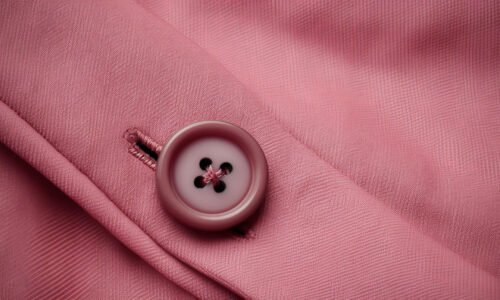The Evolution of Button Manufacturing
The journey of button manufacturing spans centuries, tracing its origins to ancient civilizations where buttons initially served both functional and decorative purposes. Early button makers employed materials such as bone, horn, wood, and seashells, meticulously handcrafting each piece to adorn garments. Over time, the techniques evolved, and metals such as bronze and copper became prevalent, enhancing the buttons’ durability while adding a touch of sophistication to attire.
As the Industrial Revolution swept across the globe, the button manufacturing industry underwent significant transformation. Traditional hand-crafted methods gave way to mass-production techniques, making buttons more accessible and affordable. The introduction of machinery in production lines allowed button manufacturing companies to scale up operations, meeting the growing demand from expanding garment factories in Gujarat and across India. These changes enabled the shift from artisanal craftsmanship to industrial efficiency.
In the 20th century, the advent of synthetic materials, such as plastic and polyester, catalyzed further innovation within the industry. Buttons could now be produced in vast quantities with consistent quality, opening a new chapter for top button manufacturers in India. This period also witnessed the emergence of these manufacturers as leaders in the global market, thanks to their ability to blend traditional artistry with modern engineering.
Today, button manufacturing companies are at the forefront of design and technological advancements. The incorporation of computer-aided design (CAD) and automated manufacturing processes allows for precise customization and intricate detailing that were once unimaginable. Companies are also exploring sustainable materials like bio-plastics and recycled components to meet the growing consumer demand for eco-friendly products.
As the fashion industry continues to evolve, top button manufacturers in India remain pivotal in driving innovation. The fusion of traditional craftsmanship with contemporary technology ensures that buttons not only serve a functional role but also enhance the aesthetic appeal of garments. The relentless pursuit of excellence by these button manufacturing companies underscores their commitment to offering products that are both high in quality and visually captivating.
Key Processes in Button Manufacturing
The creation of high-quality buttons by a button manufacturing company involves several meticulous and specialized processes. This journey begins at the design phase, where conceptualization and planning are crucial. Designers create blueprints involving dimensions, shapes, and potential materials, ensuring the final product aligns with the needs of industries such as fashion and upholstery.
Material selection is the next vital phase. Button manufacturers often use an array of materials ranging from plastics, metals, and woods to natural products like shells and stones. Each material’s unique properties influence the choice, balancing durability, aesthetics, and cost.
Production techniques play a pivotal role as well. One common method is molding, where materials like plastic or metal are melted and shaped into buttons. This can be done through injection molding for plastics or die-casting for metals. Molding offers precision, enabling the creation of intricate designs and consistent quality.
Dyeing is another important step, especially in the garment industry. Colors are meticulously chosen and applied to meet specific demands. Innovative methods such as ultrasonic dyeing have enhanced color penetration, offering vibrant and durable hues. For a garment factory in Gujarat, ensuring color consistency and durability is often a significant consideration.
After dyeing, the finishing process enhances the button’s aesthetic and tactile quality. Techniques such as polishing, varnishing, and coating are employed. These not only improve appearance but also the button’s resistance to wear and tear.
Quality control and testing are paramount in ensuring that the buttons meet industry standards. Leading button manufacturers in India have stringent protocols. They conduct rigorous tests, assessing factors like tensile strength, color fastness, and heat resistance. These measures ensure that the final product is robust and reliable.
Real-life examples illustrate how advancements in these processes have revolutionized production. For instance, the introduction of automated quality control systems has drastically reduced defect rates, significantly enhancing the efficiency and outcome of button production. Thus, through a combination of traditional methods and modern innovations, the top button manufacturers in India continue to produce buttons that set new standards in the industry.
Sustainability and Ethical Practices in Button Manufacturing
The landscape of button manufacturing is evolving, with a significant emphasis on sustainability and ethical practices. Modern consumers increasingly prioritize eco-friendly options, prompting leading button manufacturing companies to innovate with sustainable materials and methods. One notable trend within the sector is the shift from traditional plastics and metals to biodegradable and recycled alternatives. Natural materials such as corozo, wood, and even recycled coconut shells are being utilized, significantly minimizing environmental impact.
Moreover, button manufacturers are exploring processes that reduce carbon footprints. Techniques like low-energy production and water recycling methods are being integrated into factories, reflecting a broader commitment to environmental stewardship. For instance, some top button manufacturers in India are pioneering the use of solar energy to power their production units, exemplifying a forward-thinking approach to sustainable manufacturing.
Equally vital is the adherence to fair labor practices. Button manufacturing companies, including those connected to the garment factory in Gujarat, are increasingly transparent about their labor policies. Measures such as fair wages, safe working conditions, and the prohibition of child labor are becoming standard. Certification programs such as Fair Trade and SA8000 are serving as benchmarks for ethical operations, ensuring that the labor force engaged in the production process is treated with dignity and respect.
Several specific initiatives underscore the industry’s commitment to sustainability. For example, initiatives such as zero-waste manufacturing, where production by-products are repurposed or recycled, are gaining traction. Certification from organizations such as the Global Recycled Standard (GRS) offers consumers and businesses peace of mind that the products meet stringent environmental and social criteria.
In conclusion, the button manufacturing industry is undergoing a paradigm shift toward sustainability and ethical practices. This changing landscape not only meets consumer demands but also sets a precedent for other sectors to follow. As we observe more button manufacturing companies adopting these practices, the overall impact on the environment and society is poised to be profoundly positive.
Future Trends in Button Manufacturing
In the ever-evolving landscape of textile manufacturing, button manufacturing companies are at the forefront of innovation and technological advancement. Emerging trends in the industry are set to redefine the art and science of button making, transforming how products are designed, produced, and tailored to fit consumer needs.
One of the most significant trends on the horizon is the integration of smart technology. Buttons embedded with microchips that ensure authenticity, track inventory, and provide consumers with garment care information are becoming increasingly viable. This smart technology is not only enhancing product functionality but also reshaping the role buttons play in modern garment design. For a garment factory in Gujarat or elsewhere, adapting to these innovations could mean a significant competitive edge in a fast-paced market.
Customization is another critical trend shaping the future of button manufacturing. Consumers are gravitating towards personalized products, demanding buttons that reflect their individuality and style. Advances in digital tools and 3D printing are alleviating the challenges of mass customization. By leveraging these tools, top button manufacturers in India can offer bespoke designs with unprecedented speed and precision, catering to niche markets and personalized tastes effortlessly.
Furthermore, sustainability is becoming a driving force behind innovation in button manufacturing. Eco-friendly materials, recyclable components, and sustainable production processes are gaining traction as environmental consciousness rises among consumers. Manufacturers are increasingly exploring these options to align with global sustainability goals, ensuring they stay relevant and responsible in the modern market.
As fashion trends continue to evolve, so will consumer demands. The emphasis on multifunctionality, aesthetics, and sustainability will guide the innovations we will see in button design and manufacturing. For any button manufacturing company, staying attuned to these trends is critical to maintaining relevance and leadership in the industry. Embracing these innovations will not only meet current consumer expectations but also pave the way for future successes.


